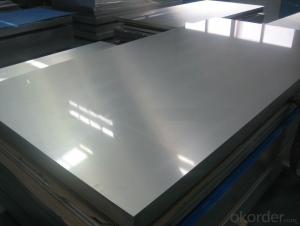430 201 202 304 304l 316 316l 321 310s 309s 904l Stainless Steel Sheet
- Loading Port:
- Shanghai
- Payment Terms:
- TT OR LC
- Min Order Qty:
- 1 m.t.
- Supply Capability:
- 20000 m.t./month
OKorder Service Pledge
OKorder Financial Service
You Might Also Like
Item specifice
430 201 202 304 304l 316 316l 321 310s 309s 904l Stainless Steel Sheet
Packaging Details:Wooden pallets,water proof paper-20'GP or 40'GP for stainless steel sheet.
Delivery Detail:within 5-7 days after receiving the deposit
1. Specifications about stainless steel sheet
Commodity | Professional 430 201 202 304 304l 316 316l 321 310s 309s 904l stainless steel sheet |
Grade | 201,202,304,304L,316,316L,310S,309S,321,301,310,410,420,430,904L |
Brand | TISCO ,BAOSTEEL,POSCO,JISCO,LISCO |
Certification | SGS,BV,IQI,TUV,ISO,etc |
Thickness | 0.2mm-150mm |
Width | 1000,1219,1250,1500mm, or as your requirements |
Length | 2000,2438,2500,3000,6000mm, or as your requirements |
Surface | No.1, 2B, BA, 8K Mirror, Hairline,satin, Embossed,brush,No.4,HL,matt,pvc film,laser film. |
Standard | ASTM,AISI,SUS,JIS,EN,DIN,GB, ASME,etc |
Delivery time | 5-7 days after confirming the order |
MOQ | 1 Ton |
Advantages | Showing the splendor of your quality, wearresistant as well , strong corrosion resistance and decorative effect, durable and beautiful in good taste. |
2.Production Flow about stainless steel sheet
Raw materials are sending to hot rolling units for rolling into different sizes
Hot rolled material is annealing in cold; rolled annealing furnace and pickling in acid.
All mill rolls are grinded on precision grinding machine with proper chamfering after first shiftoperation.
All sheets are pickled in different tanks and dried on brush roll machine before dispatched.
These sheets are again annealing and are sent to straighten machine for straightening.
Inspections are done at various stages. Keep proper control overall internal process via rolling,annealin and pickling by our experienced staff.
3.Surface--stainless steel sheet
| Surface Finish | Definition | Application |
| 2B | Those finished, after cold rolling, by heat treatment, pickling or other equivalent treatment and lastly by cold rolling to given appropriate luster. | Medical equipment, Food industry, Construction material, Kitchen utensils. |
BA/8K mirror | Those processed with bright heat treatment after cold rolling. | Kitchen utensils, Electric equipment, Building construction. |
| NO.3 | Those finished by polishing with No.100 to No.120 abrasives specified in JIS R6001. | Kitchen utensils, Building construction. |
| NO.4 | Those finished by polishing with No.150 to No.180 abrasives specified in JIS R6001. | Kitchen utensils, Building construction, Medical equipment. |
| Hairline | Those finished polishing so as to give continuous polishing streaks by using abrasive of suitable grain size. | Building Construction. |
| NO.1 | The surface finished by heat treatment and pickling or processes corresponding there to after hot rolling. | Chemical tank, pipe. |
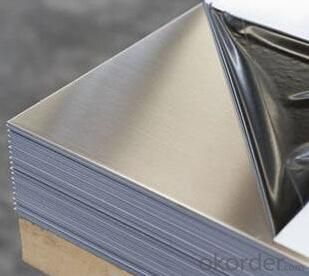

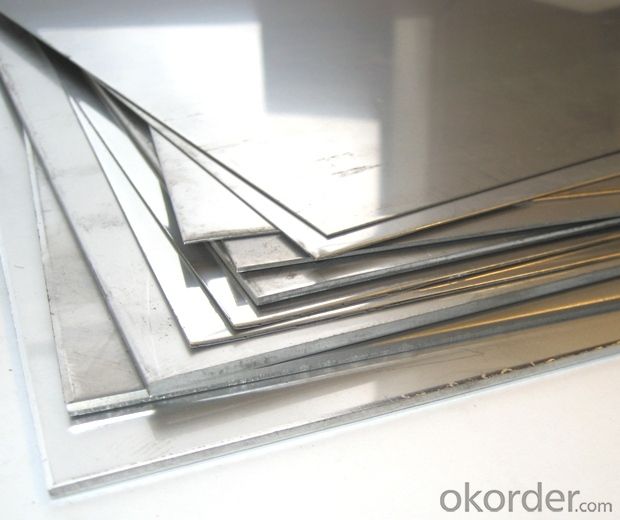
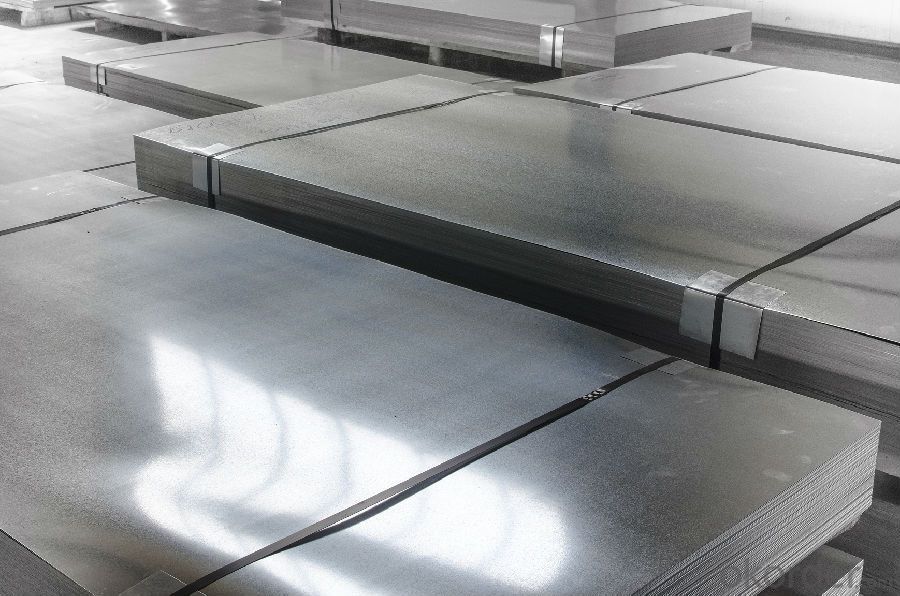
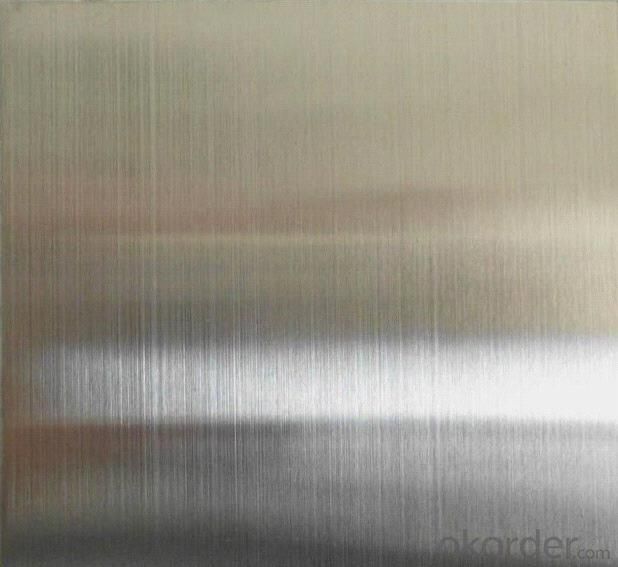
- Q:What is the composition of stainless steel sheets?
- Stainless steel sheets are primarily composed of iron, chromium, and varying amounts of other elements such as nickel, manganese, and carbon. The main component, iron, provides the strength and durability of the sheets, while chromium is added to enhance corrosion resistance. The addition of nickel increases the sheets' resistance to high temperatures and improves their overall mechanical properties. Manganese is added to enhance the sheets' formability, and carbon is added to improve their hardness. These elements work together to create a versatile and highly reliable material that is commonly used in various industries, including construction, automotive, and manufacturing.
- Q:Can stainless steel sheets be used in industrial applications?
- Yes, stainless steel sheets can be used in industrial applications. Stainless steel is known for its durability, corrosion resistance, and strength, making it suitable for various industrial sectors such as construction, automotive, manufacturing, and food processing. It is commonly used for building structures, machinery components, storage tanks, and in environments that require high hygiene standards.
- Q:Can stainless steel sheets be used outdoors?
- Yes, stainless steel sheets can be used outdoors. Stainless steel is highly resistant to corrosion and rust, making it suitable for outdoor applications. It can withstand various weather conditions and is commonly used in construction, architecture, and outdoor furniture due to its durability and aesthetic appeal.
- Q:Are stainless steel sheets suitable for desalination plants?
- Yes, stainless steel sheets are suitable for desalination plants. Stainless steel is highly resistant to corrosion and can withstand the harsh conditions found in desalination plants, such as exposure to saltwater and high temperatures. It has excellent durability and mechanical properties, making it ideal for use in various components of desalination plants, including piping, heat exchangers, and tanks. Stainless steel also has good hygiene properties, making it suitable for desalination plants that require strict cleanliness standards. Additionally, stainless steel sheets can be easily fabricated and installed, allowing for efficient construction and maintenance of desalination plants.
- Q:Can stainless steel sheets be used for lighting fixtures?
- Yes, stainless steel sheets can be used for lighting fixtures. Stainless steel is a versatile and durable material that is commonly used in various applications, including lighting fixtures. It offers several benefits such as corrosion resistance, high strength, and aesthetic appeal. Stainless steel sheets can be easily shaped, fabricated, and welded to create different designs and finishes for lighting fixtures. Additionally, stainless steel has a reflective surface that can enhance the lighting effect by providing a visually appealing and bright environment. Therefore, stainless steel sheets are a suitable choice for lighting fixtures due to their durability, versatility, and aesthetic properties.
- Q:How do you form stainless steel sheets into different shapes?
- Stainless steel sheets can be formed into different shapes through various processes such as bending, rolling, and welding. The specific method used depends on the desired shape and the thickness of the stainless steel sheet. Bending is a common method used to form stainless steel sheets into shapes such as cylinders or boxes. This process involves clamping the sheet between a punch and a die and applying force to create the desired bend. The angle and radius of the bend can be controlled by adjusting the pressure and the distance between the punch and die. Rolling is another technique employed to form stainless steel sheets into curved or cylindrical shapes. This process involves passing the sheet through a set of rollers, which gradually bend the material into the desired shape. The diameter and curvature of the final shape can be adjusted by changing the spacing and alignment of the rollers. For more complex shapes, welding is often used in conjunction with bending or rolling. In this process, multiple stainless steel sheets are joined together using heat and pressure to create the desired form. This allows for the creation of intricate shapes, such as cones or irregular geometries. In addition to these methods, specialized equipment such as hydraulic presses or hydroforming can also be utilized to form stainless steel sheets into different shapes. These techniques involve applying high pressure or fluid pressure to the sheet, resulting in deformation and the desired shape. It is important to note that forming stainless steel sheets requires skilled operators and precise machinery to ensure accuracy and quality. Additionally, the properties of the stainless steel, such as its thickness and composition, can also influence the feasibility and success of the forming process.
- Q:How are stainless steel sheets used in the construction industry?
- Due to their remarkable properties and versatility, stainless steel sheets find extensive use in the construction industry. These sheets are highly valued for their durability, resistance to corrosion, and aesthetic appeal. Roofing and cladding are among the primary applications of stainless steel sheets in construction. They are commonly employed for roof panels, wall panels, and façade systems. Stainless steel sheets provide exceptional protection against weather elements, including rain, snow, and UV rays. Moreover, they offer corrosion resistance, ensuring the long-lasting nature of the building's exterior. Furthermore, stainless steel sheets are frequently utilized in the construction of architectural structures such as bridges and tunnels. Their high strength-to-weight ratio makes them well-suited for such purposes. Stainless steel sheets can withstand heavy loads and provide reliable support, thus guaranteeing the structural integrity of these infrastructures. Additionally, stainless steel sheets are employed in the construction of interior components like elevator doors, escalators, and handrails. Their sleek and modern appearance adds an elegant touch to the overall design. Moreover, these sheets are hygienic and easy to clean, making them perfect for applications in hospitals, laboratories, and food processing facilities. In conclusion, stainless steel sheets are indispensable in the construction industry. They are utilized for roofing, cladding, architectural structures, and interior components. With their exceptional durability, corrosion resistance, and aesthetic appeal, stainless steel sheets contribute significantly to the longevity and aesthetic value of various construction projects.
- Q:Stainless steel wire drawing without fingerprints, what principle?
- Therefore, the method of stainless steel fingerprint resistance is to make the specular surface of stainless steel into diffuse surface.The conventional method mainly has two kinds of drawing and sand blastingWire drawing is to use (coarse grit) abrasive belt or grinding wheel to burnish on stainless steel surface, make stainless steel surface roughness increase, destroy its "mirror reflection" characteristic. It can be polished by hand (hand grinding can be applied to stainless steel of various shapes). It can also be polished with a special stainless steel sanding machine (suitable for stainless steel plates, but with high efficiency).
- Q:What are the features of stainless steel plates?
- According to the method of hot and cold rolled two categories, including thickness 0.5.10-885 mm 72938 thin cold plate and 4.5-100 mm thick plate.
- Q:How do you prevent pitting on stainless steel sheets?
- To prevent pitting on stainless steel sheets, it is important to avoid exposure to corrosive substances such as chloride-based cleaners or acids. Regular cleaning using mild, non-abrasive cleaners and soft cloths is recommended. Additionally, ensuring proper ventilation and avoiding prolonged exposure to high humidity or saltwater environments can help prevent pitting. Regular inspections and prompt repairs of any scratches or damages can also contribute to maintaining the integrity of stainless steel sheets and preventing pitting.
1. Manufacturer Overview |
|
|---|---|
| Location | |
| Year Established | |
| Annual Output Value | |
| Main Markets | |
| Company Certifications | |
2. Manufacturer Certificates |
|
|---|---|
| a) Certification Name | |
| Range | |
| Reference | |
| Validity Period | |
3. Manufacturer Capability |
|
|---|---|
| a)Trade Capacity | |
| Nearest Port | |
| Export Percentage | |
| No.of Employees in Trade Department | |
| Language Spoken: | |
| b)Factory Information | |
| Factory Size: | |
| No. of Production Lines | |
| Contract Manufacturing | |
| Product Price Range | |
Send your message to us
430 201 202 304 304l 316 316l 321 310s 309s 904l Stainless Steel Sheet
- Loading Port:
- Shanghai
- Payment Terms:
- TT OR LC
- Min Order Qty:
- 1 m.t.
- Supply Capability:
- 20000 m.t./month
OKorder Service Pledge
OKorder Financial Service
Similar products
New products
Hot products
Related keywords
